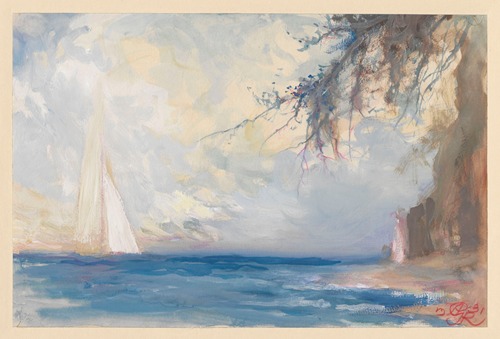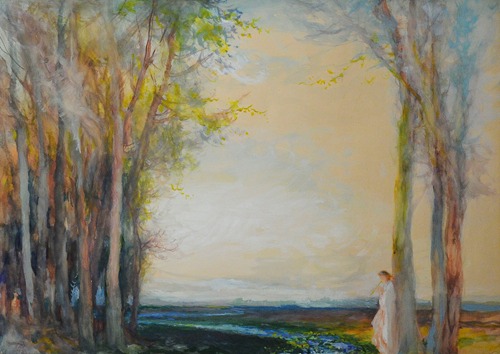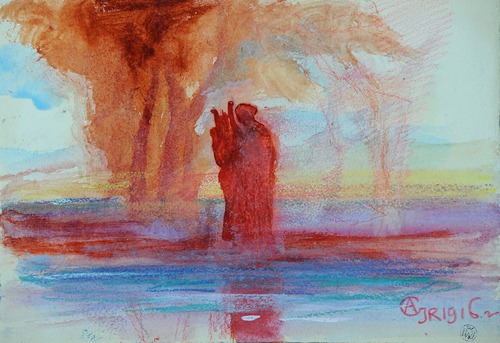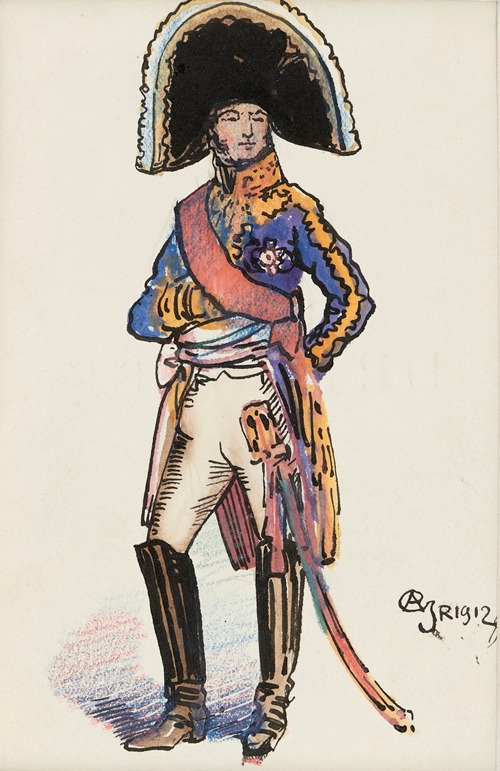Antoni Gawiński
Antoni Gawiński was a Polish painter, book and magazine illustrator working in the Art Nouveau style, art critic, writer, and poet.
Son of Jan and Wanda née Jeziorńska. He studied under Wojciech Gerson at the Drawing School in Warsaw. In 1896–1900, he continued his studies at the Academy of Fine Arts in Krakow under Jacek Malczewski and Teodor Axentowicz. In 1899, he supplemented his education at Stanisław Grocholski's private painting school in Munich. After graduating, he spent 1903–1904 in Italy. Upon his return from Italy, he settled in Warsaw in 1904. In 1910, he married Irena Jeziorańska. After the Warsaw Uprising (1944), he was displaced to Kamieńsk, and in 1945 he settled in the village of Głuchy in a manor house belonging to the Jeziorański family. He was buried in the cemetery in Niegów.
A. Gawiński's work in the visual arts was diverse, both in terms of technique and subject matter. He created over 500 drawings and paintings, the vast majority of which were small in size. He mainly used tempera, watercolors, and gouache, although he also painted with oil paints and pastels, and occasionally created zincographs. In addition, he designed theater decorations and costumes, stained glass and mosaics, and was also the author of bookplates. He also illustrated books and magazines. With the exception of his early works, which were realistic, he mainly worked in the Art Nouveau and Symbolist styles. His paintings and drawings depicted landscapes, portraits, and literary figures, and he also created numerous religious paintings. He had several solo exhibitions, and some of his works received awards.
He wrote three novels: Sen życia (The Dream of Life, 1906), Stella (1910) and Peregrynacje Andrzeja Wilczka (The Wanderings of Andrzej Wilczek, 1937), and also wrote and illustrated four children's books, including Lolek Grenadier, whose protagonist is nine-year-old Karol, the son of Bolesław Jeziorański. He was also a literary critic for several magazines, including Sfinks and Tygodnik Ilustrowany.
A large collection of Gawiński's drawings and paintings (over 170 pieces) is held by the National Museum in Warsaw, with individual works also found in the National Museum in Krakow and the National Museum in Poznań.





